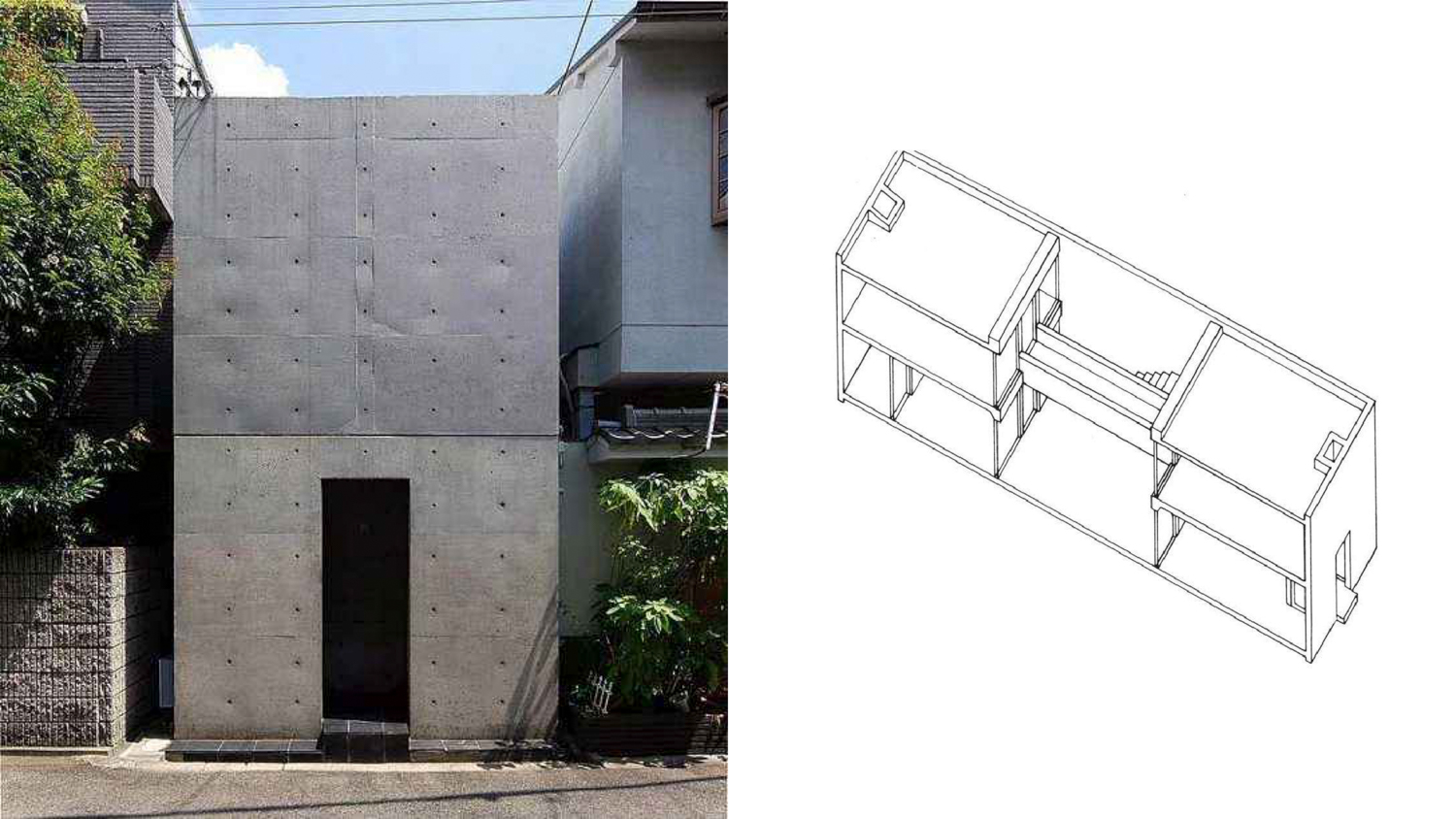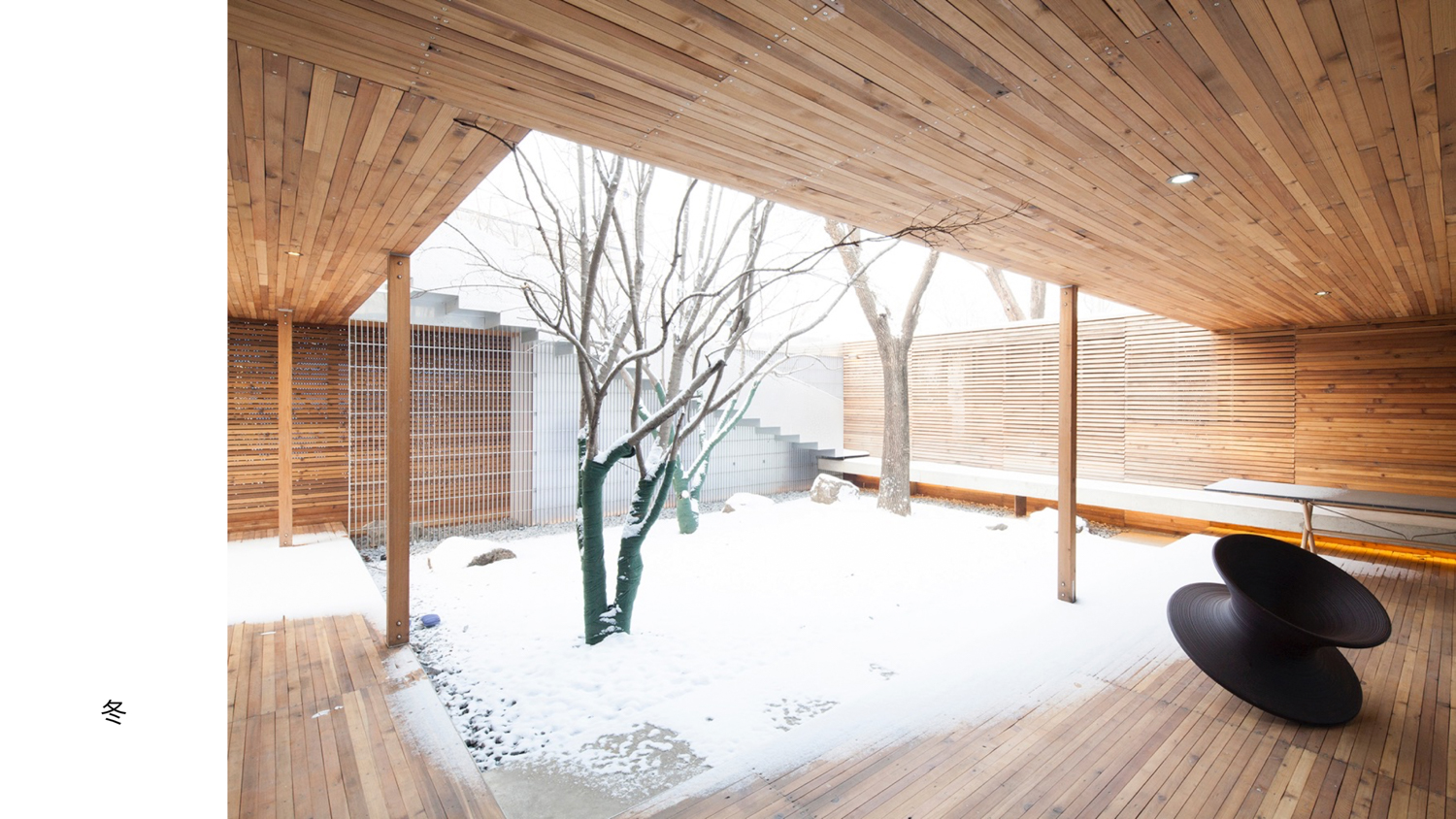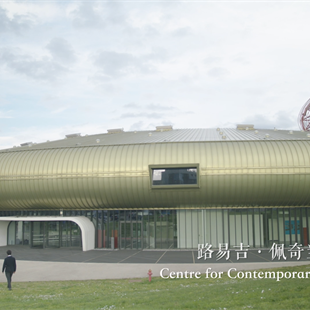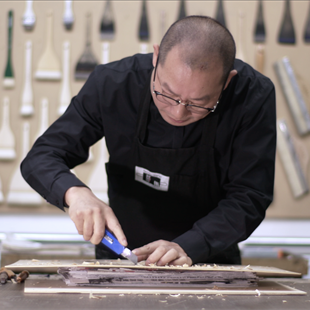Tao Lei: Hi, everyone! I’m Tao Lei and I’m an architect. Speaking of architects, many people don’t know much about what we do. I’m often asked about my profession and some people think that architects should work to build houses, while others think that a building, very tall and big building, requires no architects but engineers. These ideas, I think, are quite contradictory. Some clients even come to me, asking whether I can help them with interior design, which makes me very confused. I tell them that I’m not a professional at this because I’m an architect. It remains as a very confusing question—what does an architect do?
Today we’ll discuss a series of questions and also answer this question. Of course, I think that’s very interesting. So far, I, as an architect, am still called “Engineer Tao” instead of “Teacher Tao” at the construction site—only among my colleagues, I might be called “Teacher Tao”. I tell people that I’m not an engineer. It’s a widespread misunderstanding in society. A question may arise—if architects work to “construct” a building, what is a building? We will certainly talk about this question. We tend to regard a house as a building, or a building as a house, which is often obscured. However, some people also think that a building and a house seem to be different—the word “building” sounds more gorgeous. Everyone may think so.
In fact, an architect is not an engineer and this is very clear. We, as architects, think about a problem, such as how a building should be designed, from the perspective of feeling, emotion, or culture, different from that of an engineer. Each of us, regardless of social class, have our own ideal house. Today, people in rural areas become richer and want to build a house for themselves on their own land while urban residents also get rich and begin to pursue their dream of a perfect house.
So, many purchase seemingly expensive and high-end villas. But, do these villas have their own value or significance? If so, what’s the significance? It seems that many people understand little about that. Let’s first take a look at a most basic house, which is said to have undergone hundreds or even thousands of years’ of evolution. It’s actually very basic. I believe that everyone who sees this house will at least not feel that it’s vulgar, though it seems not so upscale or comfortable. But you won’t take it as a low-grade or a vulgar house. You can see that its walls are actually made of mud, the local material, which are heat-retaining—this experience is accumulated over several years—with windows for light and an exchange with the outside world, and a door for an entrance and exit. All these are indispensable, a must for a house. And there’s a sloping roof, because in the past, we didn’t have the waterproof techniques we have today. The roof here is made of grass.
In the past we didn’t have a high productivity, for many people, houses could only be built with local materials. Therefore, people’s wisdom accumulated over several years helped to build a basic house. In fact, a house is most intriguing, which has existed for a long time over history. Houses of this type are actually common in today’s rural areas, where many farmers build such houses. Obviously, it’s probably a perfect building or house that they want and understand.
We can see that houses with only the surface plastered with tiles but with no sides turn on the flank and are regarded as gorgeous or splendid. Some even have Roman columns—unimaginable in the past—but actually they’re fake ones made of gypsum. Then, it also has a door and windows. There’s no essential difference from the house we saw just now, except that it has three floors to show that the owner is richer than in the past and then hopes to upgrade his home. He even keeps a small sloping roof, though a fake one, with only part of it at the edge reserved. It’s actually a flat roof, and the rear part is open. Although we have the techniques to easily make a flat waterproof roof, he still wants the roof to be built that way. I think there’s something wrong here.
No fundamental changes have happened to the house and to his daily life. The windows may be a little bigger than those we saw just now, which are already big enough. So, what does the owner and also resident improve? What does he get? Except some tiles, the Roman columns and the fake sloping roof made of glazed tiles, nothing seems to change. This is a house for a farmer, who may be thought to have little insight or knowledge and thus builds just a poor house. Then let’s turn to urban residents today, especially those who are rich, experienced and insightful—what do they think about a house?
This is a villa in Shadow Creek in Beijing, which is, of course, very expensive. However, we can see that it’s just an upgrade of the above mentioned house, also with a simple windowframe, doors, a sloping roof, and Roman columns more delicate and complicated. This sloping roof is also a fake one—not waterproof at all—but it just looks more like a sloping roof than that of the previous house, where the owner just makes half of it, that is, part of the edge, to save money. The owner of this villa can now afford a completely new one which even seems to fit a Western, classical, and aristocratic life. I wonder if he yearns for something like power and wealth, or just shows others that he is rich and well-stated. Regardless of all that’s mentioned above, let’s come back to one of the most basic functions of the building—“to live”—in this regard, is there any improvement?


Let’s take a look at the interior, the space inside the building the developer hands over to its clients. In fact, there seems to be no fundamental differences from the building we live in today. That is to say, the very magnificent appearance has nothing to do with the space inside. Some people say that Chinese people are imitating European or foreign lifestyles, or previously pursuing something unimaginable while others argue that we should advocate our own traditions. Of course, the crude indoor space of a house in general needs extra decoration and renovation. This is probably average decoration. Let’s look at another example.
Just now, we saw the traditional Western style, and this one seems to be in the traditional Chinese style. This is Cathay View, another project in Beijing. It seems to be in traditional. However, you can’t really understand which dynasty it belongs to. It may be in the Qing Dynasty, or an earlier dynasty, but it is not clear. There isn’t any wood structure, and many types have nothing to do with the sì hé yuàn四合院(quadrangle dwellings) of the past. In fact, it’s a shell constructed on the flat. Now let’s take a look at the interior, which is almost the same as Shadow Creek, though with bigger windows. The only difference is that there are some panes in the window seen from the inside, seeming to represent Chinese traditions. Is this the culture we desire? It’s a big question. That’s the way I think about what kind of space we should live in today and what the best buildings are, especially for Chinese people.


So, let’s have a look at a house that some of our architects have in mind. An architect named Ludwig Mies Van der Rohe undoubtedly has a profound influence on the architecture of the whole world, especially when he puts forward the slogan of “less is more”. Today, I’m not going to talk about this slogan. Let’s have a look at what the houses he designed look like. He designed these houses in the 1950s, decades ago. As you can see, the design is very simple. There’re no symbols except the building itself, no Roman columns, no complicated decorations, nor complicated decorative lines. But the scale and the structure are quite elaborate, and more importantly, he integrates people into the nature.
Our technology today can already integrate us into nature. He used the glass, seemingly invisible to maintain such a living space. People living in it seem to live in nature: the floor is used just to isolate the house from the ground so as to prevent moisture; his flat roof, with the problem of drainage solved by today’s technology, no longer needs to be the complicated sloping roof of the past; and all the windows are the simplest. The building is equipped with nothing more than the basic elements in consideration of how people live, especially the indoor conveniences, including the bathroom, the kitchen, and the bedrooms.

However, we’ve got a lot of feelings from such a house, where we can feel our own living conditions and the nature around us. There’s probably a great difference from the previous example. Of course, this is only one aspect. We can look at its scale. He paid great attention to the building materials themselves, including the steel which was put to the best use, and he carefully controlled the thickness of the stairs and the entire platform. All these, I think, are worth consideration. This concerns the building itself, and this is the meaning of a building, I want to elaborate: just the building itself, instead of anything else. In fact, we can see that there’s nothing to do with the so-called culture, the past, power or wealth. He was just thinking about how people could survive in nature. This is a good example, because it’s in a very good natural environment, which itself has some privacy and the richness of the surrounding nature. However, in a human society, it is obviously impossible for all of us to enjoy such an environment.
Next let’s look at another example, Tadao Ando. Of course, Tadao Ando is definitely a master who exerts a profound influence on architecture. He built a house, but to the other extreme, totally different from the previous one. Actually, you can see no feelings, only a door without any windows. Nothing is left. It’s in a very populous urban area, completely different from a house in nature. Well, I think this building still considers the relationship between man and nature. In fact, in this building, you can feel nature instead, because he makes an inner court in the middle, which is not roofed. When it rains, the rain will seem to fall into a room—of course it’s semi-outdoor. Then, the space for living on both sides must be connected with space through the open air. Therefore, his purpose is very clear: in such a simple house, he still wants to feel nature, which I think is worth a broad understanding. As far as I’m concerned, nature is at least something outdoor—nature should be outdoors and anything outdoors and in the open air is natural. I think nature doesn’t necessarily refer to green hills and clear water; it should be a broad concept.


Actually, the significance of this building, I think, is also very clear. The significance lies in itself. The architect cares about the building space itself, or the impact of this space on the culture of the residents. I believe that the attitudes towards culture, the feelings about nature and the way the Oriental get along with nature are different from that of the West. Or, we have different attitudes towards and ways of getting along with nature. This may represent a thinking of the Oriental. Why do we today become less likely to choose our residents? Because we tend to attach many things to the buildings, which interfere with our judgement about the buildings. In the early days, human beings were very unsophisticated, because they had no technology, and were greatly affected by nature.
Whether it was windy or rainy, people couldn’t protect themselves very well. In addition, there were some attacks by wild animals. Therefore, at that time, in order to survive and to get basic comfort, people chose “caves”. I think this was a process for people to escape from nature. There was no choice. Because they lived in nature, their chances of survival were greatly threatened. Today, however, cities have changed. We’ve already got rid of such a problem with the development of human technology today. But we’re now far from nature, which, I think, is worth our attention as urban residents: how can we get back to nature? This also responds to the theme of my speech today of “Return to Nature”.
However, today it’s different for us to return to the nature of the past, because each era has its own characteristics and conditions. Current conditions and the development of our urbanization no longer allow our way of treating a house and nature in the past. Therefore, whether the building can protect our body and whether it can give our emotions due care are, I think, questions worth considering. In fact, not only architects, but also all individuals in society should think about this question concerning their own living requirements and understanding. Of course, as far as today’s architectural space is concerned, its task, I think, is to reconnect the interior space and outdoor nature together. Is it possible to achieve this in the current system and with the current technology? And I’m making attempts myself.

For most of the part, it is impossible for us to know ideal houses in the eye of the people from the past, except that we can only get some clues from ancient landscape paintings. Obviously, today we have no such conditions as in the past, and the landscape paintings themselves reflect otherworldly ideas; few mirror the authenticity of society at that time. And thus it represents feelings and pursuits. Is there a chance to achieve such a thing today? I think the answer is “yes”: I’m making such an attempt. The example I give originates from a project that I’m running this year, which lies actually in the forest and the mountains, just like the landscape painting.
We’ve just seen that buildings and nature are so naturally combined. In fact, nature doesn’t exclude the intervention of humans, which I think still works today. I just wonder if it is possible to integrate the building into this environment, or plant it into the soil. It seems to grow inside, just like the ancient landscape painting we saw, connected to the surrounding woods and roads. You can feel the existence of people in the environment, which is what I want to express. Of course, as you can see, this is the original base; these are the dotted lines; and this is the red line telling us where a building can be constructed.

 At the site, there’s already a mountain road and a small stream, so I build the buildings above the road and the stream, some even between the two mountain creeks, expressing the same feelings we could get from the previous landscape painting. With the ups and downs of the terrain, I try to begin a direct dialogue between the building and nature. Therefore, I make the building open in two directions towards the valley, and there isn’t any obstructions between them.
At the site, there’s already a mountain road and a small stream, so I build the buildings above the road and the stream, some even between the two mountain creeks, expressing the same feelings we could get from the previous landscape painting. With the ups and downs of the terrain, I try to begin a direct dialogue between the building and nature. Therefore, I make the building open in two directions towards the valley, and there isn’t any obstructions between them.
Of course, with the current technical support, I am able to keep trees in the middle of the house, and also make it possible to plant trees there, as an exploration of the possibility to reserve the natural environment. Moreover, the roof is made into a forest theater from which we can see the natural landscape. This is its overall picture. We can see that there are streams below and roads with trees around. This represents my attitude towards nature. I think maybe I can learn how to get along with nature from the ancient culture. You can see the details, including the entrance, and actually I pay more attention to the interior, because today people have higher and higher requirements for lifestyle and comfort—something impossible in the past. Therefore, I pay great attention to indoor space.
That is to say, if we sit indoors, we can still feel the nature, very directly, without any sense of obstacles—a dialogue with the forest, which I think is possible in this building. It’s completely open, with transparent glass as the only boundary between the building and the nature, as can be seen clearly from this picture. The forest in it is a real one that I shot myself. This is a space for activities, connected to nature. What’s the most comfortable and appropriate house for us? In fact, we can find the answer in the traditional. In our life, there are still many heritage buildings like those in the paintings of ancient landscape. This is a folk house in the southern part of Anhui. Last year, I went there and was deeply impressed. I walked into the house, and found a patio which was not separated from the interior space by even the glass, for there was no glass at that time. It happened to be raining that day, and the rain fell completely into the middle of the courtyard, that is, into the interior. Just imagine seeing the raindrops fall in front of you?

Moreover, the rain will flow along the ground to its outdoor water system and finally form a complete system. You can experience it in the flesh that the so-called concept of harmony between man and nature. Such design triggers my thinking about some new ones. If I’m to build a new house, how can I combine it with nature, or how can I create a new natural scene inside the building? This is a new-style building, a new-style building I’m constructing, which is to be like “inward nature”. I imagine it as a way of looking inward.

So what are the benefits of this approach? I think it’ll make the building more directly and effectively involved in the indoor space, and make the building more effectively intervene into our life itself. I don’t mean the nature outside the house, but the nature indoors. This is the overall picture of the design, but I also quote from Mr. Lin Yutang, “In the house is a garden inside which is a house, inside a courtyard and inside a tree; above the tree one can see the sky, and inside the sky is the moon.”I think it is an appropriate metaphor for this design.
We can see that I’ve done a lot of work to make life inside semi-outdoor, because I think “outdoor” and “indoor” aren’t exactly the same. What can be used to connect the two—the gray space—for me, is very important, because it could seemingly remove the barriers between people’s life and nature, and present an abundant semi-outdoor landscape. It should if connected to the outdoor courtyard, offer an opportunity to take a walk, unimpeded even indoors, and new small yards will serve every specific functional space. This is the dining room. Imagine that there will be bamboo next to it. In the dining room, a vat of water can be seen. This can hardly be realized in the past. In retrospect of the examples I have given, such as the villas in Shadow Creek and Cathay View, there is no such consideration.
We can think about it from many angles. It seems that we can also experience what we have mentioned just now—to walk and stroll around in different scenes, because this is our own territory, part of our own life. This is a space for sleep, right across from a natural landscape of the sky in front. This is another room, still directly connected with the outdoor space. But first and foremost, residents’ privacy should be preserved. All these measures may benefit from the invention of glass, one of the most important materials in modern times, without which all these ideas were impossible in the past.
Courtyards have always been an architectural language that has continued in Chinese tradition. We’ve been admiring them since ancient times. However, why not make some changes today? I’m thinking about it. I think there are some limitations in courtyards of the past, although they’ve inspired us a lot. For example, the gardens in regions south of the Yangtze River broaden our horizons and this is what we are proud of in the traditional culture. They indeed combine our actions of living with nature in a marvellous way. However, it is no long possible today, because we can’t mobilize so many resources, occupy such a vast land, or be assigned such a large project.

However, it indeed explores the relationship between man and nature. In this respect, I think it’s far beyond this era, though its interior seems not to meet all our daily needs, and its relationship with nature is better than our buildings do today. Now let’s look at another one. This is a quadrangle courtyard in Beijing in the North China. In fact, in the past, we never gave up dealing with the human-nature relationship, especially in the north. However, we can see that the way can’t be applied to the problem of social ethics, as rooms are divided into primary and subordinate groups, not all of which are really convenient. There’s a primary room and some wings, which is different from the houses today, as they are not functionally good enough. Our lifestyle today is totally different from that of the past, as there was no bathroom, no well-equipped kitchen, no fine dining room and even no specially designed bedrooms. The inside space is uniform with all rooms in the large space, with no specific function. I think people today can’t put up with the few functions, and it’s not so comfortable.

And then let’s continue to talk about the construction techniques. Based on the previous materials and the techniques, this is the best that could be constructed, very dedicated though. It could only be a pitched roof, while today we have more choices. We can solve many problems that this building couldn’t. This is my own house. I also hope to have a courtyard, living a more convenient and more comfortable life, and not to be separated from nature as if there were a window of paper. To realize that, I’ve made a lot of attempts.
This is the design. There used to be a vacant land, and a house in the middle, which is, of course, a reconstruction. But there’s no direct relationship between the house and the land. The vacant land only represents nature, in a normal state. The nature, I think, is pale without intervention. And this is a building model. As you can see, there are four squares in the middle, which are the new courtyards in the big house. Actually, the basic strategy in it is to cover the entire base with a large building so as to mix the outdoor and indoor space thoroughly. My purpose is to blur the boundaries between the two and make it difficult to distinguish which is outdoor and which is indoor. Let’s imagine: this is one of the courtyards I live in, where I feel the four seasons all year round by myself. This is in spring; this is in summer—and I just took the photo today; this is in autumn, and this is in winter. I feel the changes while sitting indoors, which in turn will definitely enrich my life.




Moreover, I define my own territory and area on the ground, and in this space I indeed feel the self-existence and self-consciousness. Therefore, I’ll become more relaxed and comfortable, and I’ll start to pay attention to nature unconsciously. Of course, sometimes I fantasize about that, if people were able to turn the earth into a homothermal planet, and to stop the rain on earth, then we would not need buildings and we can live outdoors.
Because we construct a building, just to protect ourselves from rain, sun, cold and heat, with no other meaning. Glass solves such problems, while I attribute glass to the function of division: this is the dining room and this is what’s seen outwards from within, while this is what’s seen directly outwards; this is the foyer…I want to blur the indoor space and the outdoor space, to blur all the boundaries, all of life boundaries. All I want is a fuzzy relationship. We can see that different courtyards, with the space covered are divided into corresponding spaces. Because I hope its close connection with the interior could be established so that we can always feel the existence of the outdoor space. This is the bedroom, and we can take in all the bamboo in front of it in a glance. In reverse, this is what we can see inwards from the courtyard. From this angle, we can see more clearly that there’s only one piece of glass to mark the boundary.
With the last picture, I want to tell everyone that the whole space is in a mixed state. It is difficult to tell indoors from outdoors from this picture. As I have said so much, I think I should still make a conclusion, as architecture always reacts with the times, such as many traditional constructions we have seen. Actually, they are not so suitable for us today.
In addition, I think that architecture is always closely linked to technological development. We must make use of the latest technology, the more convenient and better-used materials and better techniques today help construct our buildings; architecture always has to be closely related to the climate of the region, with different styles of buildings suitable for different regions. This responds to the above mentioned topic: how we human beings should get along with the climate and escape from nature while keeping in contact with nature. Therefore, I think architecture always has a close relationship with the way of life. Both the sì hé yuàn (四合院, quadrangle dwellings) and the buildings in Huizhou of Anhui actually represent ways of life in the past, obviously unsuitable today. We must find a proper way. Since we have our own way of life, there should be, of course, a modern building suitable for us today.

So, this is why we talk about contemporary architecture. In fact, the essence of architecture is nothing more than a series of integrated and logical thinking on materials, construction, space, culture, or history, which attaches a certain connotation to a house. A house with a connotation, I think, can be called a “construction”. I’ve talked so much today. All I want to ask is whether we can get to know ourselves again, and then understand ourselves, so as to find a building that suits ourselves and helps us to enjoy it. That’s all, thank you.




























